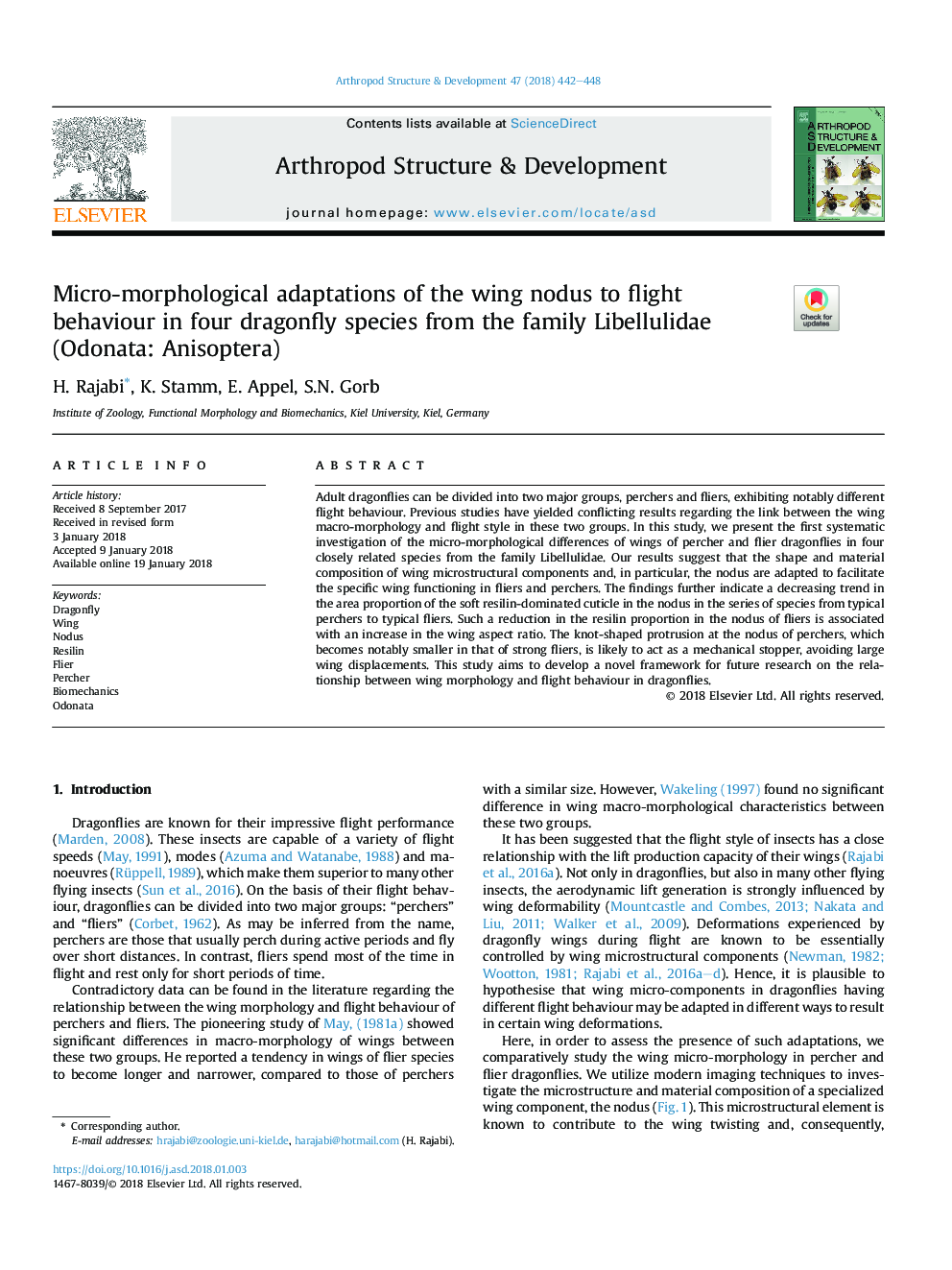| Article ID | Journal | Published Year | Pages | File Type |
|---|---|---|---|---|
| 8624678 | Arthropod Structure & Development | 2018 | 7 Pages |
Abstract
Adult dragonflies can be divided into two major groups, perchers and fliers, exhibiting notably different flight behaviour. Previous studies have yielded conflicting results regarding the link between the wing macro-morphology and flight style in these two groups. In this study, we present the first systematic investigation of the micro-morphological differences of wings of percher and flier dragonflies in four closely related species from the family Libellulidae. Our results suggest that the shape and material composition of wing microstructural components and, in particular, the nodus are adapted to facilitate the specific wing functioning in fliers and perchers. The findings further indicate a decreasing trend in the area proportion of the soft resilin-dominated cuticle in the nodus in the series of species from typical perchers to typical fliers. Such a reduction in the resilin proportion in the nodus of fliers is associated with an increase in the wing aspect ratio. The knot-shaped protrusion at the nodus of perchers, which becomes notably smaller in that of strong fliers, is likely to act as a mechanical stopper, avoiding large wing displacements. This study aims to develop a novel framework for future research on the relationship between wing morphology and flight behaviour in dragonflies.
Related Topics
Life Sciences
Agricultural and Biological Sciences
Insect Science
Authors
H. Rajabi, K. Stamm, E. Appel, S.N. Gorb,
